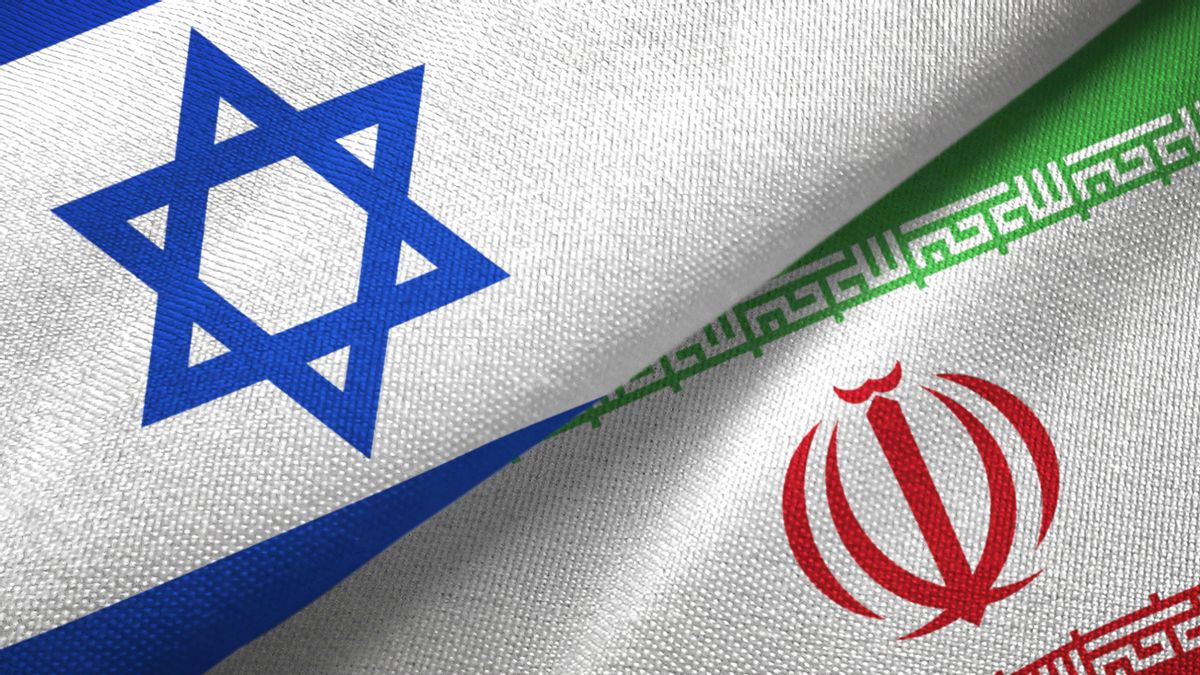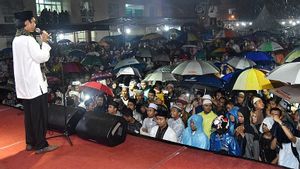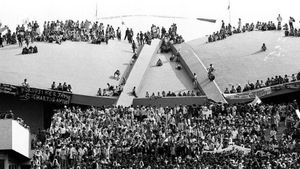JAKARTA - Iran-Israeli relations looked intimate in the era of the reign of the Iranian Shah, Mohammad Reza Pahlavi. Cooperation is carried out in all fields. Iran depends on Israel. Vice versa. Iran refuses to join the will of other Arabic countries to hate Israel.
The honeymoon of the two new countries was disrupted by the presence of figures who opposed Reza Pahlevi's power. Ayatollah Sayyid Ruhollah Musavi Khomeini, for example. The charismatic cleric inflamed the Iranian Revolution and started a new chapter of hostile to Iran-Israel.
The existence of power of the Pahlevi Dynasty in Iran (1925-1979) is full of dynamics. The dynasty began with Reza Shah's rule from 1925-1941. The next power was continued by the son, Mohammad Reza Pahlevi from 1941.
Reza Pahlevi's leadership is considered a stain in Iran's history. The figure of the leader is considered to have allied himself with the United States (US) and Israel. This condition is considered by the Iranian rulers as a favorable choice.
The closeness to the US makes Iran more calm in security matters. The closeness to Israel makes Iran more calm in economic matters. Cooperation in all fields with Israel began to be seen in the 1950s.
Both countries are equally profitable. Iran gets income. Take for example when Israel gets up to 60 percent of oil supply for its country's needs. This closeness made Israel help coach Iran's Intelligence Service, SAVAK.
The kindness immediately returned with the attitude of Iran which rejected the Palestinian Liberation Forces, the PLO entered his country. Israel then supported all kinds of political steps from Reza Pahlevi. Reza was supported in an effort to clean Iran's military from its opponents. Some were arrested, some were shot dead.
The Iranian parliament and political parties are weakened. This condition made Reza Pahlevi freely lead Iran. He also began to carry out national development programs, the White Revolution. The main components are agrarian matters, education, women's rights, and westernization.
A breakthrough that aims -- on paper to increase the lives of the people. Instead of prospering the Iranian people, the policy actually made the Iranian people overtake. The gap between the rich and the poor is too wide.
The life of the people is the number. Meanwhile, Reza Pahlevi himself lives a charity of assets guarded by the US and Israel.
In recent years, Iran and Israel have built close ties. Reza Pahlevi refuses to allow Israel's enemies, the Palestinian Liberation Organization, to function in Iran. Israeli security forces helped train Iran's secret police, Savak.
"Iran fulfilled its promise to sell all the oil Israel wanted last year, which is 60 percent of Israel's needs of 200 thousand barrels per day. Jews in Iran live a good life, and trade between the two developing countries," said Bernard Gwertzman in his article on The New York Times website entitledShadow of Khomeini Falls on the Mideast Peace Talks (1979).
Reza Pahlevi's leadership made all Iranian people angry. They were blackmailed by the country like dairy cows. Even then, their livelihoods have not been raised. The people are only taken by names for various programs, including the White Revolution. However, the welfare of the people is the umpteenth number.
This condition is further exacerbated by the issue of corruption and repression of Reza Pahlevi's power. Hate was embedded because Reza Pahlevi was considered a west doll. Reza Pahlevi and his close friends AS and Israel became enemies with a revolutionary group.
The revolutionary group was led by Ayatollah Sayyid Ruhollah Musavi Khomeini. The charismatic cleric became the most consistent person against the monarchy leadership in Iran. Khomeini also dedicated his life to the fight against the monarchy.
He was even forced to live in exile in Neauphle-le-chataeu, a village 40 km from Paris, France. However, his influence grew in the resistance movement. Support for the Iranian people also flows from the Palestinian Liberation Forces, PLO.
PLO leader Yasser Arafat also provided a lot of assistance for the movement against Shah and his Israeli crafts. This condition makes the Iranian people have big capital to be able to undermine the Pahlevi regime. The 1979 Iranian revolution also reverberated and there were not many victims.
The people's victory in the Iranian Revolution was greeted with great fanfare. The monarchy regime was then changed to the Islamic Republic of Iran. Also, Khomeini was asked to be the first Supreme Leader of the Republic of Iran. Leadership firmly changed the political direction of Iran-Israeli relations.
SEE ALSO:
That relationship is no longer intimate. Khomeini likes to make Israel the main enemy. This attitude was carried out as a form of support for the Palestinian people and PLO. Khomeini then referred to the United States as The Great Satan and Israel as Little Satan.
The nickname is like a bell reminiscent of the start of the Iran-Israeli Conflict. Iran's attitude that sees Israel as the invaders of the Palestinian people continues to survive. In fact, until now. Iran also continues to support the Palestinian armed groups to fight Israel.
The relationship with Israel and South Africa is zionist and racist. Iran became much closer to countries and progressive movements of national liberation. Arafat came to Tehran on February 17, 1979 with a large group. After that, PLO representatives in Tehran were opened and their place was in the former Israeli Embassy in Tehran, "said Nasir Tamara in the book Iranian Revolution (2017).
The English, Chinese, Japanese, Arabic, and French versions are automatically generated by the AI. So there may still be inaccuracies in translating, please always see Indonesian as our main language. (system supported by DigitalSiber.id)


















